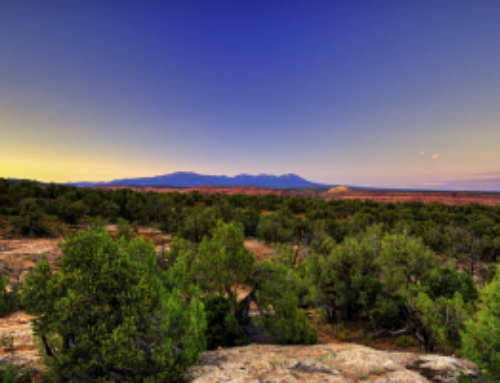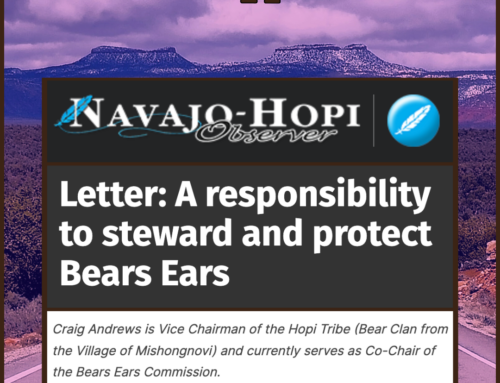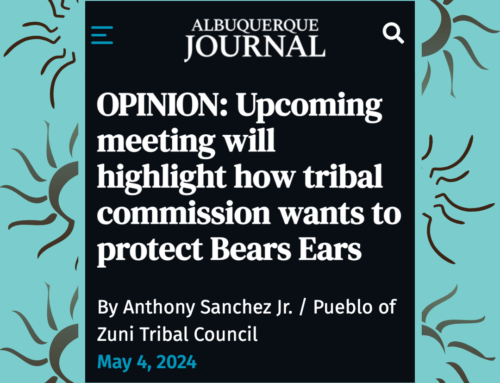Real protection means more than recognizing boundaries. It means durable protections.
By Malcolm Lehi | For The Salt Lake Tribune
Bears Ears National Monument is more than a public lands designation. It is a vital part of Ute Mountain Ute culture. Our connection to this land goes back thousands of years. We call this place Kwiyagatu Nukavachi.
The Bears Ears is said to be where bears come out of hibernation in the spring. It is where our ancestors hunted, gathered medicine, held ceremonies and lived with the land. These places hold our stories and the memory of our people. We have lived in the Bears Ears region for millennia, and we are still here.
While non-Tribal governments have redrawn boundaries, the truth remains: Bears Ears lies within our ancestral homelands. The landforms, springs, and canyons are more than just features on a map. They are our relatives. They carry our identity, our teachings and our duties to those yet to come. We continue to visit these places, care for them and pass down their meaning.
In May of this year, the U.S. Department of Justice released a legal opinion suggesting that a president may be able to undo national monument designations. The opinion doesn’t change the law, but it introduces doubt about the permanence of monument designations, and it reveals how fragile protections can be when partisan politics take the lead. For the Tribal Nations of the Bears Ears Commission, that’s not just a bureaucratic threat, it’s a deeply personal one.
We don’t see Bears Ears as a partisan political issue. It is a place of prayer, healing and deep meaning. Efforts to shrink or weaken the Monument’s protections harm our culture, our rights and our future.
We know Bears Ears means a lot to many people. For centuries, it has been a place of connection, not just for Tribes, but also for local communities, hikers, conservationists and all who feel a bond with the land. From the start, we have believed in a collaborative approach to protecting it.
The 2016 designation of Bears Ears was a landmark moment. For the first time in U.S. history, a group of Tribal Nations — the Ute Mountain Ute Tribe, Navajo Nation, Zuni Tribe, Hopi Tribe and the Ute Indian Tribe of the Uintah and Ouray Reservation — joined together to protect a shared sacred landscape. The federal government listened and recognized our voices. But in 2017, when the monument was reduced, it sent a troubling message about how seriously Tribal leadership would be honored. The restoration in 2021 reaffirmed our sovereignty, but real protection means more than recognizing boundaries. It means durable protections that allow local businesses, land managers and communities to plan for the future with confidence.
Since the summer of 2022, we have worked hard to shape how Bears Ears is managed. In partnership with federal agencies, we helped create a Resource Management Plan (RMP) that reflects a new way of working together. The plan centers Traditional Indigenous Knowledge and shared responsibility. It protects sacred places and puts Tribal voices at the heart of its stewardship. This Tribal-informed management also benefits Utah’s economy. It supports outdoor recreation, tourism and small businesses. A healthy land means more jobs and local revenues.
Bears Ears needs a path that does not swing back and forth with elections. This living, sacred cultural landscape deserves lasting protection. That means continued protections and the continued recognition of Tribal Nations as collaborative management partners. It means implementing the RMP and maintaining ongoing engagement with the Tribes of the Bears Ears Commission.
It also means listening to the people. Recent polls confirm that support for protecting Bears Ears is broad, bipartisan and growing. Seventy-one percent of Utah voters — including 61% of Republicans — want protections for the monument to remain in place. Nearly 9 in 10 Utahns agree that Tribal Nations should have a strong role in managing their ancestral lands. That support crosses political lines.
The Bears Ears Commission is ready. We bring generations of knowledge. We have a vision rooted in balance, care and strength. We want future generations to experience Bears Ears as we have: sacred and alive.
Now is the time for leadership. The Bears Ears landscape needs to be protected for good. Let’s honor the land, the people and the future we all share.
Malcolm Lehi is a councilman for the Ute Mountain Ute Tribe and serves as Co-Chair for the Bears Ears Commission. He was part of the group that worked to establish the original Bears Ears National Monument in 2016.
This piece was originally published in The Salt Lake Tribune on July 30, 2025. We are grateful to the Tribune for allowing us to share this important perspective from Councilman Malcolm Lehi, Ute Mountain Ute Tribe and Co-Chair of the Bears Ears Commission.



